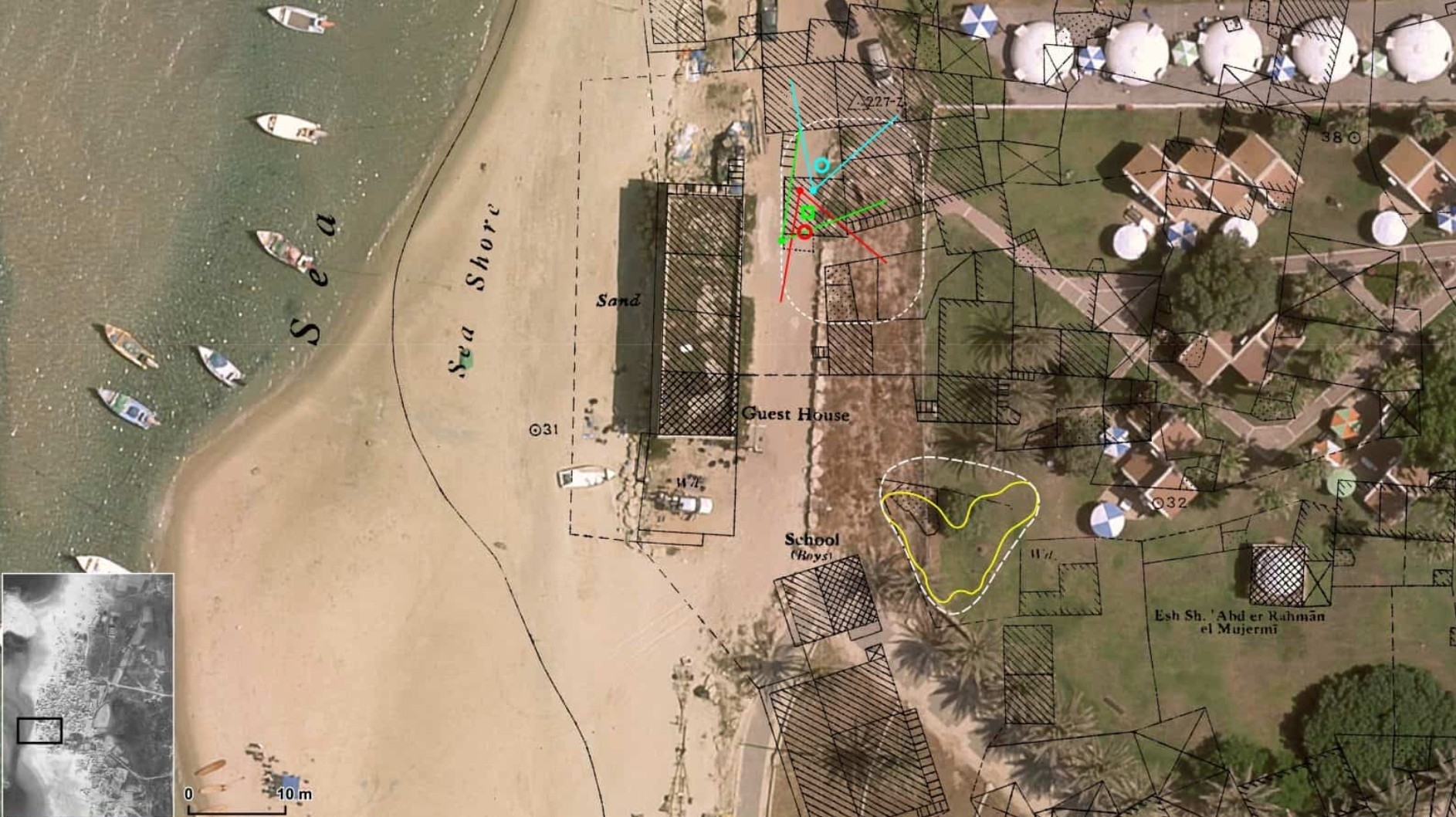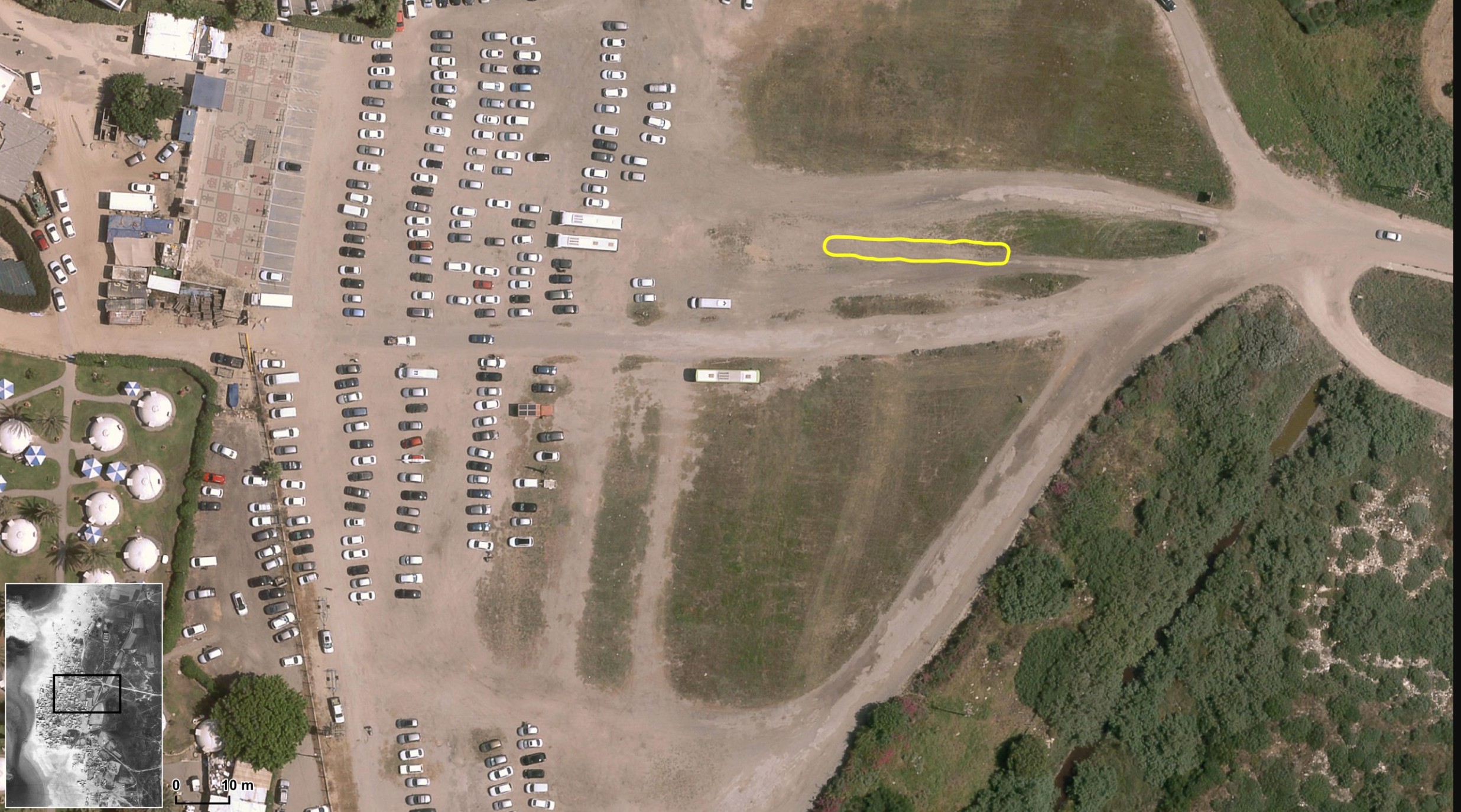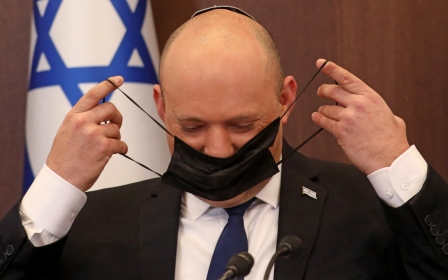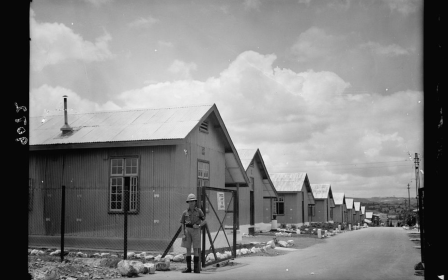Tantura massacre: Palestinian families call on Israel to mark site of mass graves

Palestinian families from Tantura village near Haifa, where Israeli forces carried out a massacre in 1948, have asked Israeli authorities to demarcate areas believed to be mass graves, and allow them to visit.
The request was made this week by Adalah, the Haifa-based legal centre, citing new evidence uncovered by a year-and-a-half-long Forensic Architecture (FA) investigation of mass graves at the present-day beach resort, some 30km south of Haifa.
"We are asking for the graves and cemeteries to be marked, to put an end to the desecration of the sites and to allow dignified visits of family members and religious ceremonies," Suhad Bishara, Adalah's director of Land and Planning Rights Unit, told Middle East Eye.
The request is believed to be the first of its kind, largely because it is the first massacre of many committed by Israeli forces during the Nakba to be investigated thoroughly, Bishara said.
Nakba, the Arabic word for "catastrophe", refers to the ethnic cleansing of Palestine by Zionist militias to make way for the creation of Israel in 1948.
New MEE newsletter: Jerusalem Dispatch
Sign up to get the latest insights and analysis on Israel-Palestine, alongside Turkey Unpacked and other MEE newsletters
In a year-long premeditated military campaign, Zionist forces killed thousands of Palestinians, destroyed over 500 villages, forcibly expelled 80 percent of the population and captured 78 percent of historic Palestine, on which the State of Israel was established.
On the evening of 22 May 1948, Israeli forces attacked Tantura, a small fishing village of around 1,500 residents, as part of the offensive. Within hours, they "conducted a systematic massacre of disarmed Palestinian fighters and civilians", writes FA in their report. Between 20 and 280 people are believed to have been executed.
Drawing on an ever-growing body of evidence and using 3D modelling, historic aerial photos and testimonies from survivors, FA identified two sites that are "very likely" mass graves and two others which are possibly mass graves.
"We don't say it's conclusive because, of course, we haven't looked for the bodies there, but they are very likely, because the visual evidence and testimonial evidence correspond one to one," said Shouredi Molavi, FA's lead Palestine researcher.
"The other two sites are possible because there we see ground anomalies in the area where people said things have happened. So people were buried en masse or executions happened, but those sites don't correspond one to one."
Both of the "very likely" sites are today located in car parks serving Dor Beach. One, which was already known, was an open field near a cemetery in 1948; the other, previously unidentified, was an orchard owned by the Dassouki family.
The sites were among those visited this week by a small group of Tantura family members, who marked the graves using ribbons and laid flowers for the first time.
"Seeing the families, it was very sad. They got very emotional," said Bishara, who accompanied them. "But it tells you how important these things are. It's a very basic human demand."
Both FA and Adalah, which commissioned FA's investigation, say they hope the Tantura project is the beginning of wider research into other massacres from the same era.
'The methods we learn from Tantura, we will take to other villages'
- Shouredi Molavi, Forensic Architecture researcher
"We are learning how to read aerial images from 75 years ago. We are learning how to cross reference what we have all seen a thousand times with testimony in a new way. The methods we learn from Tantura, we will take to other villages," said Molavi.
For example, because the two "very likely" mass graves in Tantura are so similar - located on the outskirts of the village, with the same height, width and east-west orientation - Molavi says they are "mind-blowing" discoveries for future research.
"This is a method of operation. This is [a] signature of mass graves in the country, which means that the next village that I go to, that's what I'm going to look for," she said.
"I'm going to go straight to open fields in the periphery and see if I can find scars. That's what's massive. One site is an incident. Two sites is a pattern."
Middle East Eye delivers independent and unrivalled coverage and analysis of the Middle East, North Africa and beyond. To learn more about republishing this content and the associated fees, please fill out this form. More about MEE can be found here.





